Achilles Tendon Bursitis or Tendinitis — Ankle Minimally Invasive Surgery: treatment in the Best Hospitals of Germany
Treatment prices are regulated by national law of the corresponding countries, but can also include additional hospital coefficients. In order to receive the individual cost calculation, please send us the request and medical records.
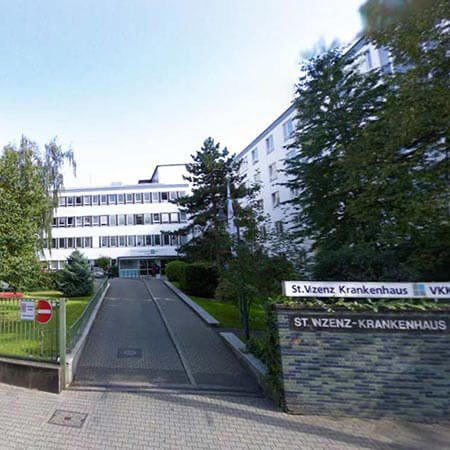
Department of Adult and Pediatric Orthopedics, Foot Surgery
The Department of Adult and Pediatric Orthopedics, Foot Surgery offers the widest range of modern medical services to patients suffering from musculoskeletal diseases. The department specializes in knee and hip replacement surgery, including revision interventions to replace previously implanted artificial joints. The department has the status of a certified Maximum Care Endoprosthetics Center (endoCert), which means adherence to the requirements of European professional societies for carrying out procedures of this kind, a high level of safety and treatment efficiency. It is worth noting that the department uses the innovative ROSA® robotic system for performing knee replacement surgery. A special Rapid Recovery Program is used for the rapid recovery of mobility after joint surgery, which allows the patients to quickly return to their usual life. An integral part of the department's clinical practice is also the treatment of foot diseases and deformities in adults and children. The medical facility has been operating for more than 50 years, and therefore it provides patients with the highest quality medical care and easily copes even with highly severe pathologies.
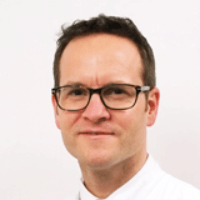


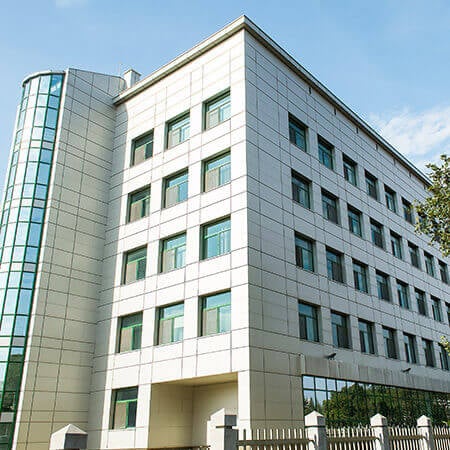
Department of Adult and Pediatric Orthopedics, Trauma Surgery, Foot Surgery, Hand Surgery and Rheumatology
The Department of Adult and Pediatric Orthopedics, Trauma Surgery, Foot Surgery, Hand Surgery and Rheumatology offers the full range of diagnostic and therapeutic services in its areas of specialization. The key areas of work of the department's doctors include large joint arthroplasty, arthroscopic interventions on the knee, hip, and shoulder joints, conservative and surgical treatment of foot and hand diseases and deformities, rheumatic joint lesions, orthopedic diseases in children, and musculoskeletal injuries. The key to successful clinical practice is the professionalism and unique experience of the department's medical team, combined with the advanced infrastructure and state-of-the-art equipment. The department has 5 operating rooms equipped with the latest technology. Most surgical interventions are performed using minimally invasive techniques, due to which, in the shortest possible time, the patient is verticalized, their mobility is restored, and a pronounced pain syndrome is excluded. The department annually performs more than 4,500 surgical interventions, including especially complex ones, so the specialists at the medical facility are rightfully proud of their impressive clinical experience in the surgical treatment of orthopedic diseases. Over the years, the department has gained an excellent reputation not only in Germany but also far beyond its borders.
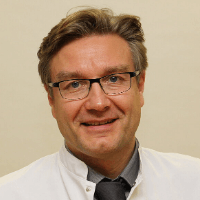

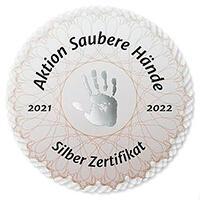
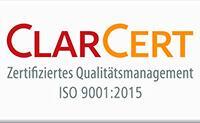

Department of Adult and Pediatric Orthopedics
The University Hospital Ulm is an advanced medical complex that provides patients with high-class medical care using the very latest scientific achievements. The medical facility has been performing successful clinical activities for more than 40 years and has long earned an excellent reputation throughout Europe. The hospital regularly demonstrates high treatment success rates, takes an active part in the training of medical students, and works tirelessly on promising research projects. The university hospital consists of 29 specialized departments and 16 scientific institutes, where more than 7,000 highly qualified employees work for the benefit of their patients. More than 55,000 inpatients and about 300,000 outpatients are treated here every year. The hospital has 1,274 beds. The medical team of the hospital is focused on providing personalized medical services using the most modern and sparing diagnostic and treatment methods.
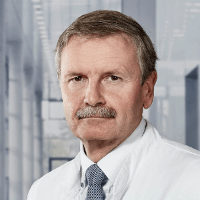
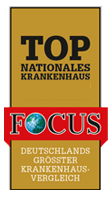




Achilles tendon diseases and injuries lead to chronic pain and loss of supportability of the foot. They are treated with conservative methods whenever possible, but sometimes conservative therapy does not help or gives only temporary results. In such a situation, the patient requires surgical intervention. In Germany, preference is given to minimally invasive endoscopic techniques. Such interventions are less traumatic, safer, and easier to tolerate by the patient. Due to the milder traumatization, recovery is faster, and patients can start rehabilitation earlier and return to sports training in the shortest possible time.
Content
- Achilles tendonitis and bursitis
- Surgery for tendonitis and bursitis
- Surgery for tendon rupture
- Treatment of Haglund's deformity
- Benefits of minimally invasive surgery
- After surgery
- Where is it better to undergo treatment
Achilles tendonitis and bursitis
The Achilles (calcaneal) tendon is the largest in the human body. Its injury or inflammation impairs the support of the lower extremity. Achilles tendonitis is common in athletes and physically active young people. One-third of all cases of tendon pathology is localized in the distal (lower) third.
Degenerative and dystrophic changes in the Achilles tendon are called tendinopathies. There are three main pathologies in this group of diseases: retrocalcaneal bursitis, Haglund's syndrome (deformity), and Achilles tendon enthesopathy.
In 1928, Patrick Haglund described various Achilles tendon lesions and identified individual diseases, including Achilles tendon ossification and Achilles tendon bursitis. He drew attention to two tendon bags: between the calcaneus and the skin, between the Achilles tendon and the calcaneus. These bags are called bursae. Their inflammation is called bursitis. Since the tendon is located nearby, bursitis and tendonitis often develop simultaneously. Such forms of the disease are called Achilles bursitis.
Tendonitis develops gradually as a result of prolonged microtrauma. Its causes may be:
- weak tendons;
- irrationally organized physical exercises;
- poorly-fitting shoes.
The part of the Achilles tendon located at a distance of 4-6 cm from the fixation site is subjected to the greatest loads. It is poorly supplied with blood and does not regenerate well.
There is a hereditary predisposition to the development of tendonitis and bursitis. Approximately one in three people have a ventral attachment of the tendon of the long plantar muscle to the Achilles tendon. As a result, the tendon bursa is constantly irritated under load, which leads to bursitis.
The risk of Achilles tendonitis and bursitis increases with poorly organized physical exercises, excessively long running distances, and a sharp change in the training program. Tendon injuries are often caused by too rapid forcing of the athlete's speed and strength qualities.
Surgery for tendonitis and bursitis
If acute tendonitis and bursitis respond well to conservative therapy, chronic tendonitis usually requires surgery. It is performed when tendon tissue degeneration signs are detected, and scar tissue grows.
Doctors abroad perform minimally invasive surgery on the Achilles tendon. They dissect scars and adhesions. It is possible to cut the fascia to slide the tendon and improve its blood supply.
Bursitis usually requires excision of the tendon bursa.
Tenotomy is performed to treat tendonitis: doctors excise the area of tendon degeneration, and then the resulting defect is sutured. However, not always the ends can be connected and sutured. Tenotomy may sometimes leave an extensive defect, which must be replaced with a graft. In this case, plastic surgery is performed with autologous donor tendons or synthetic materials.
In most cases, surgeons repair the tendon with autoplasty. The patient's ankle is under a great load, as most of them are athletes or just physically active people. For the ankle not to suffer, the tendon must be strong. Therefore, the treatment for Achilles tendon involves the use of the strongest patient's tissues. They are characterized by good engraftment and reduce the risk of recurrent injury. Donor tendon transplantation ensures adequate blood circulation in the tissues. Surgeons most often perform autoplasty with fragments from the proximal part of the Achilles tendon, muscle, and extensor expansion of the gastrocnemius muscle, and less often – the tendon of the long plantar, long or short peroneus muscle.
Alloplasty can restore ankle function in patients with low physical activity. Donor tendon preservation slightly reduces its strength. On the other hand, there is no need to inflict additional trauma on the part of the donor site (parts of the body from which the tendon is taken for transplantation), making the treatment more sparing and safer for health.
Some medical clinics perform surgery to restore the ankle function by Achilles tendon plastic surgery with synthetic materials: nylon, dacron, lavsan, marlex, carbon fibers, etc. Their use is less physiological, and therefore the artificial tendon implantation may cause joint inflammation. However, the quality of materials has improved in recent years, so the risk of complications is reduced, and the recreated tendons are pretty strong.
Surgery for tendon rupture
Achilles tendon ruptures are common in sports. They account for up to a third of all tendon injuries in the musculoskeletal system. The attempts to suture the tendon have been known since the time of Galen (II-III century AD). The frequency of ruptures had increased sharply since the 20th century when people began to play sports. Today, Achilles tendon injuries account for 10% of all sports injuries.
The injuries can be fresh or old. Old injuries are considered to be injuries received more than two weeks ago. By this time, granulation tissue is formed, and the ends of the tendon diverge due to the contraction of the triceps surae muscle of the calf. It becomes more complex to suture.
There are conservative treatment methods for tendon ruptures. However, therapy continues for a long time: up to 12 weeks, the patient needs to walk in a cast. During this time, muscle atrophy occurs. In addition, the tendon's sliding ability is impaired, the ankle joint's stiffness develops, and the risk of recurrent rupture during sports increases. Therefore, in patients with high requirements for a functional outcome, conservative treatment tactics are not applicable, and surgical intervention is required for the treatment of the disease.
Tendon suture. It is used for Achilles tendon injury less than two weeks. There are more than 40 ways of suturing. After suturing, the tendon gradually fuses.
Autograft restoration. It is used in case of rupture or degenerative changes in the tendons. They cannot be sutured reliably, so doctors take a piece of tissue from the upper part of the Achilles tendon and suture it to the torn part.
Tendon plastic surgery. It is required for old injuries. More than 80 types of plastic surgery are known. Doctors use a variety of materials to repair the tendon:
- patient's tendons (autograft);
- donor preserved tendons (allograft);
- animal tendons (xenograft);
- synthetic materials.
Treatment of Haglund's deformity
The cause of tendon inflammation may be chronic damage by the bony growth on the back of the calcaneus. This disease is one of the most common causes of back pain.
Surgical treatment can be performed with open or endoscopic techniques. In addition, minimally invasive percutaneous surgery is used for Haglund's deformity. It is performed through skin punctures under X-ray or ultrasound guidance.
A third of patients have a deformity on both legs at once. Such patients require bilateral surgery.
The open surgical technique involves resectioning the superior posterior part of the calcaneus or wedge osteotomy of the heel. The surgery involves the excision of the bursa because if it is left, it becomes the cause of chronic pain. This operation is traumatic, leading to the formation of an unaesthetic scar, sometimes complicated by a calcaneal fracture. The risk of stiffness of the Achilles tendon with limited dorsiflexion of the foot remains. In 30% of cases, there are problems with the healing of the postoperative wound.
Minimally invasive surgery is sparing and less risky. Therefore, such interventions are gradually replacing open ones in developed countries. The operation is performed through a small vertical skin incision. The part of the calcaneus is destroyed with a shaver (a rotating instrument). In addition, surgeons perform the resection of the damaged bursa. The intervention is arthroscopically controlled: the doctor uses a mini camera to accurately and safely perform the necessary manipulations. During the operation, the doctor has the opportunity to examine the upper surface of the heel and remove scar tissue.
Benefits of minimally invasive surgery
Doctors perform both open and minimally invasive surgeries to treat Achilles tendon diseases.
Endoscopic interventions are technically more complex. They are not performed in every clinic. However, they have advantages over open surgery. Short incisions are used for access. The trauma rate of the intervention is reduced. After surgery, patients can begin recovery faster, avoiding significant muscle atrophy and decreased range of motion in the ankle joint.
In addition, endoscopic surgery has the following benefits:
- it is performed faster;
- it reduces the risk of infectious complications by four times;
- it reduces the risk of skin sensitivity disorder by almost two times;
- the risk of postoperative scar hypersensitivity is 2,5 times lower;
- damages to the sural nerve, plantar tendon, and medial Achilles tendon are less likely to occur.
After surgery
The patient needs orthopaedic rehabilitation after surgery. Its duration depends on the type of operation. After an open intervention, recovery usually takes up to 3,5 months. After minimally invasive surgery, patients recover faster: about two months. However, you can switch to maximum sports loads no earlier than after 5-6 months, and after the treatment of chronic tendon ruptures, recovery can take up to 9 months.
In the early postoperative period, limb immobilization is performed. Doctors use the procedures to improve blood circulation, relieve muscle atrophy, maintain ankle mobility, and prevent adhesions. The specialists use physiotherapy, pneumatic compression, massage, therapeutic exercises, and electromyostimulation.
After the end of the period of immobilization, the further goal of orthopaedic rehabilitation is to restore the supportability of the limb and increase the range of motion in the ankle. The primary method is therapeutic exercises. Resistance exercises for the muscles of the lower leg are used. Walking movements are practiced.
Where is it better to undergo treatment
You can undergo treatment in one of the German medical centers. Surgeons in this country perform the latest orthopaedic surgeries for tendonitis, bursitis, Achilles tendon rupture. Here are a few reasons for you to use the services of German doctors:
- high-precision diagnostics allows for detecting the causes of inflammation of the tendon and tendon bursa;
- minimally invasive surgery through short incisions;
- vast experience in the use of endoscopic equipment;
- minimal risk of injury to important nerves, vessels, and tendons during surgery due to the high qualification of surgeons;
- comprehensive early rehabilitation and well-performed pain management.
The type of operation is chosen individually, depending on the nature of the disease or injury, its duration, severity, and the requirements for the treatment outcomes. If it is required to obtain a donor tendon for Achilles plastic surgery, this operation is also performed using a minimally invasive endoscopic method.
Please use the Booking Health service to undergo treatment at the best hospitals for surgery in Germany. On our website, you have the opportunity to get up-to-date and accurate information about the cost of surgery in Germany, compare prices in different German hospitals and book a program at a favorable price. The treatment will be easier and faster for you, and the cost of treatment in Germany will be lower.
You are welcome to leave your request on the Booking Health website. Our employee will contact you, consult, and answer all questions. We will take care of the organization of your trip abroad. We will provide the following benefits for you:
- We will select the best German hospital, whose doctors specialize in minimally invasive ankle surgery and achieve the best results.
- We will help you overcome the language barrier and establish communication with the doctor of the German hospital.
- We will reduce the waiting period for treatment, and you will receive medical care on the most suitable dates.
- We will reduce the price. The cost of treatment in Germany will be lower than usual due to the lack of overpricing and coefficients for foreign patients.
- Our experts will solve any organizational issues: paperwork, transfer from the airport to the German hospital and back, hotel booking, and interpreting services.
- We will prepare your medical documents and translate them into English or German. You do not have to undergo previously performed diagnostic procedures.
- We will keep in contact with the German hospital after the completion of treatment.
- We will organize additional diagnostics and treatment, if necessary.
- We will buy medicines in another country and forward them to your native country.
While the best specialists in the world take care of your health, the Booking Health staff will help you reduce the cost of treatment in Germany and take care of all your travel arrangements.
Authors:
The article was edited by medical experts, board certified doctors Dr. Nadezhda Ivanisova and Dr. Vadim Zhiliuk. For the treatment of the conditions referred to in the article, you must consult a doctor; the information in the article is not intended for self-medication!
Sources:

